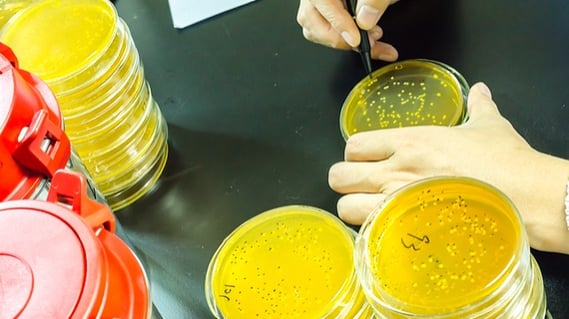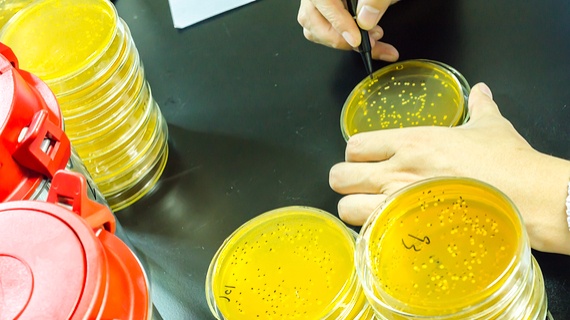
If you’ve undertaken water testing as part of your legionella control scheme, it’s important to know what to do in the event of a positive result.
Don’t panic…
The first you need to do after discovering you have legionella on-site is not panic! A positive test result for the bacteria isn’t necessarily a sign of non-compliance with health and safety guidelines. Indeed, legionella bacteria is present in almost all natural water sources, and it is only certain conditions in man-made water systems that can encourage growth and lead to risk.
These conditions will have been identified in your legionella risk assessment, which is also where you would have identified the need for water testing.
… But take it seriously
Growth of legionella bacteria in a water system can lead to a risk of people contracting Legionnaires’ disease. This is a serious form of pneumonia that can have fatal consequences, as well as severe financial and legal repercussions for an organisation responsible for an outbreak.
Your immediate priorities following a positive test result for legionella bacteria on-site should be to:
- Take action to protect the health and safety of the people in your care (staff, residents, visitors, etc);
- Notify the relevant bodies.
Who is responsible?
The HSE states that any organisation can implement its own legionella control scheme. It must, however, appoint someone with the appropriate skills, experience and training to undertake the work.
This person should be responsible not only for carrying out the initial legionella risk assessment and overseeing ongoing monitoring activities (such as water testing), but also drawing up a plan for any remedial action necessary to minimise the presence of legionella as far as possible.
A positive test result may indicate that additional remedial action is required to reduce the legionella risk to a legally acceptable level. If you find yourself in any doubt as to how to go about this, we recommend you solicit the services of a professional water treatment company that can provide a full range of legionella control measures, from removal of dead legs to water tank repair and replacement.
Follow the legionella control plan
As above (depending on the strength of the positive results and the level of risk it represents to your business), your initial actions may include an immediate review of your legionella control scheme, as well as steps such as:
- Water chlorination (which disinfects the water to remove microbiological organisms and bacteria);
- Removal or flushing of dead legs (cleaning the sections of pipework that pose a risk of stagnation due to infrequent use or disuse);
- Thermostatic Mixing Valve (TMV) servicing, which ensures the temperature controls used to prevent scalding have been appropriately fitted and continue to work as needed without themselves posing a greater legionella risk.
A series of retests should then be taken until the legionella bacteria is known to be under control again.
Notify the relevant bodies
Not all organisations need to notify a governing body about a positive legionella result. However, those responsible for care homes must ensure they follow Regulation 18 of the Health and Social Care Act and notify the Care Quality Commission.
Failure to do so can result in financial penalties for care homes, even if the appropriate action has been taken to safeguard the health and safety of people in their care.
Update your records
It is essential that you document all findings of the risk assessment, tests and remedial action undertaken. This not only ensures an adequate paper trail for auditors to know you’ve dealt with the issue in a satisfactory manner, it also helps new staff see what’s been done previously and what they need to continue to do to ensure future legionella compliance.
Records should be kept for the duration of the time for which they remain current and for at least two years after that. However, records detailing the monitoring inspections, tests and dates need to be kept for at least five years.
Want to ensure your organisation is compliant with all legionella control regulations? Click the link below to download our free legionella control checklist.








